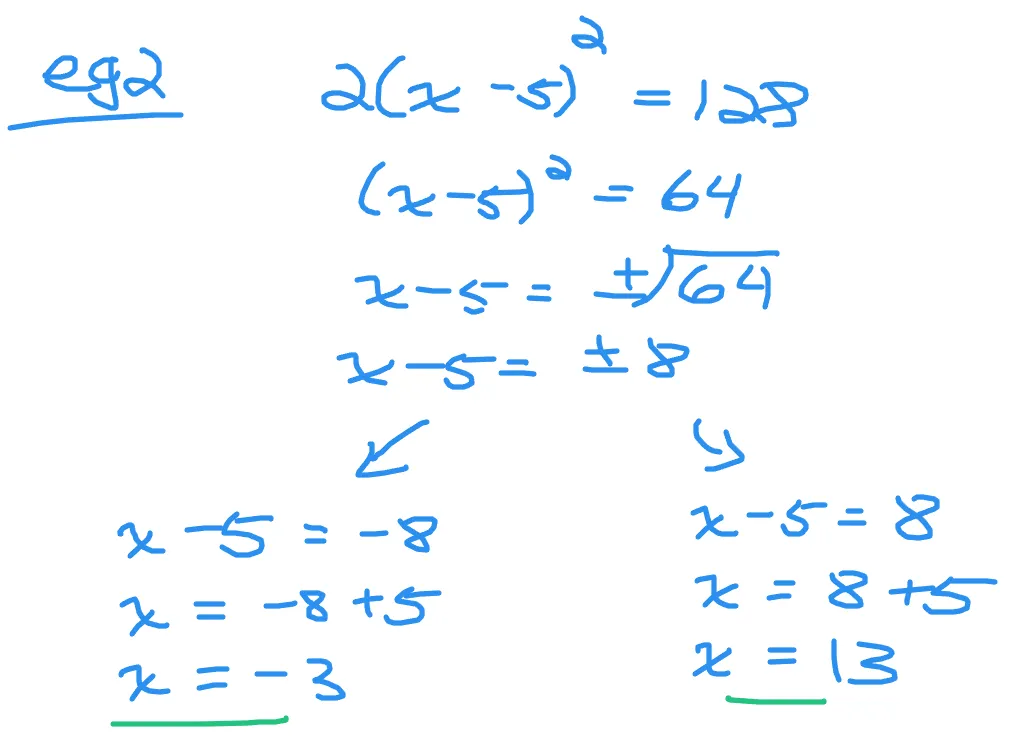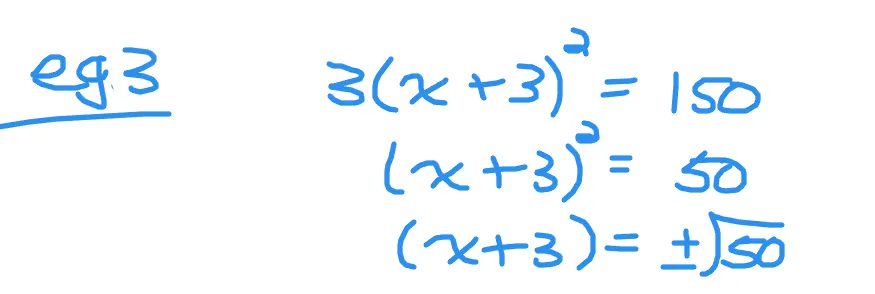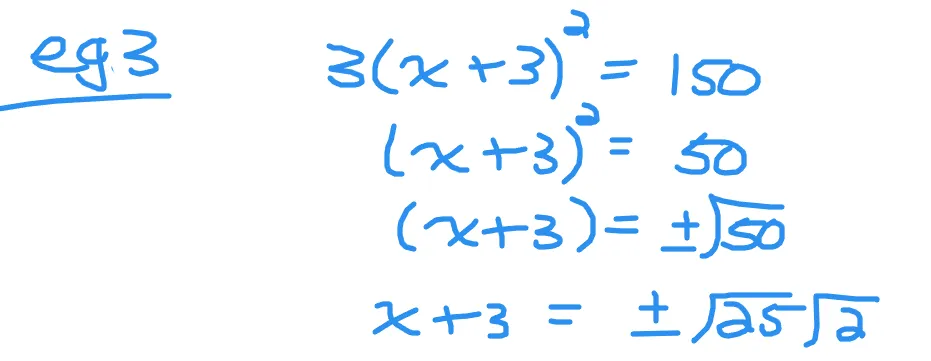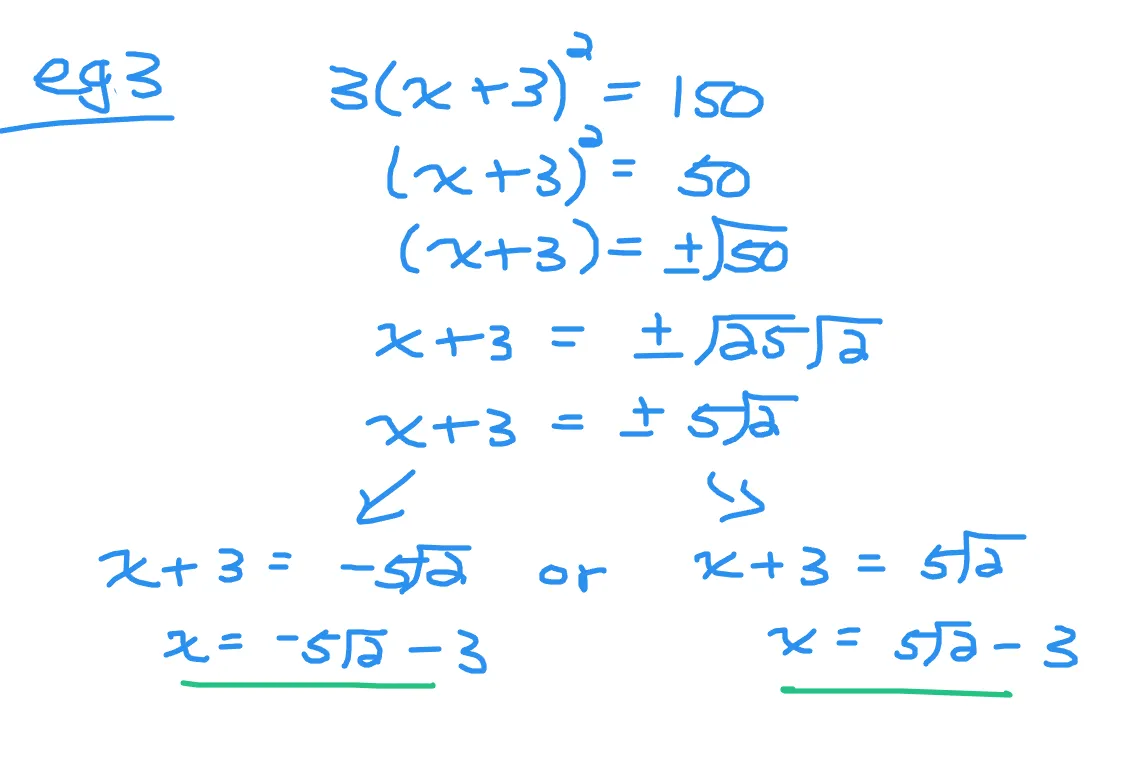Hi there. In this math post, I cover the topic of solving square equations. It is assumed that the reader is familiar with squares, perfect squares, square roots and solving linear equations from algebra.

Topics
- Squares & Square Roots Of Numbers Review
- Solving Square Equations With Examples
Square Roots Review
The area of a square is multiplying the side length of the square by itself. This number that represents the area is called the square of the number. As an example the area of a square with a side length of five is 25 square units. This is from five multiplied by five. You can also say that 25 is the square of five. Also you can say that five is the square root of 25.
Negative Values From The Square Root Too
The square root of 25 is not just positive five. It can also be negative five. This is because -5 x -5 = +25. In general the square root of a non-negative number gives two answers. Two answers covers the positive case and the negative case.
There are times when you take only the positive square root as the negative answer does not make sense when it comes to side length or distance.
Solving Square Equations With Examples
In these examples I present how to solve for the unknown value x. You could expand the squared binomial on the left side but that can take some time. It is easier to isolate for the squared binomial and take the square root of both sides. Don't forget the plus and minus cases for obtaining two answers.
Screenshots are from witeboard.com with the use of my Wacom Stylus tablet & pen.
Example One
Solve for x in (x + 2)^2 = 25?
With this simple example you can take the square root of both sides. The left side would turn into x + 2. For the right side of the equation the square root of 25 is plus or minus 5.
There are two cases here. Case one is (x + 2) = -5 and solve for x. The answer for case one would be x = -7. With case two it is (x + 2) = + 5. The answer for x here is x = 3. The two answers are x = -7 and x = 3.

Example Two
What are the values of x in 2(x - 5)^2 = 128?
The squared binomial term is not fully isolated. Divide both sides by 2. The left side is (x - 5)^2 and the right side is 64. Sixty four is a nice number as it is a perfect square.
Take the square root on both sides. This results in (x - 5) on the left side and plus or minus 8 for the right side.
Case one: (x - 5) = -8, x = -8 + 5, x = -3
Case two: (x - 5) = +8, x = +8 + 5, x = 13

Example Three - Reducing Square Roots
In 3(x + 3)^2 = 150 what are the values of x?
I thought I'd throw in a more complicated example here. To isolated the squared binomial, divide by 3 first. The next step ends up being (x + 3)^2 = 50. Notice that the right side is a fifty which is not a perfect square.

The next step involves taking the square root of both sides. On the left it is (x + 3) with the right side being the square root of 50. Even though the square root of fifty is not a perfect square we can reduce or simplify it.

Determine number factors for 50 where one of the factors is a perfect square. Perfect squares includes numbers like 1, 4, 9, 16, 25, 36, 49. This is from 1 x 1, 2 x 2, 3 x 3, 4 x 4, 5 x 5, .... For 50 I would use 25 x 2. The square root of 50 would be sqrt(25) x sqrt(2). The square root of 25 is known which is 5.
The square root of 50 would be plus or minus sqrt(25) x sqrt(2) = plus/minus 5sqrt(2).

After reducing the square root of 50, solve for x in the two cases. Screenshot shown below. The answers are x = +5sqrt(2) - 3 and x = -5sqrt(2) - 3.
